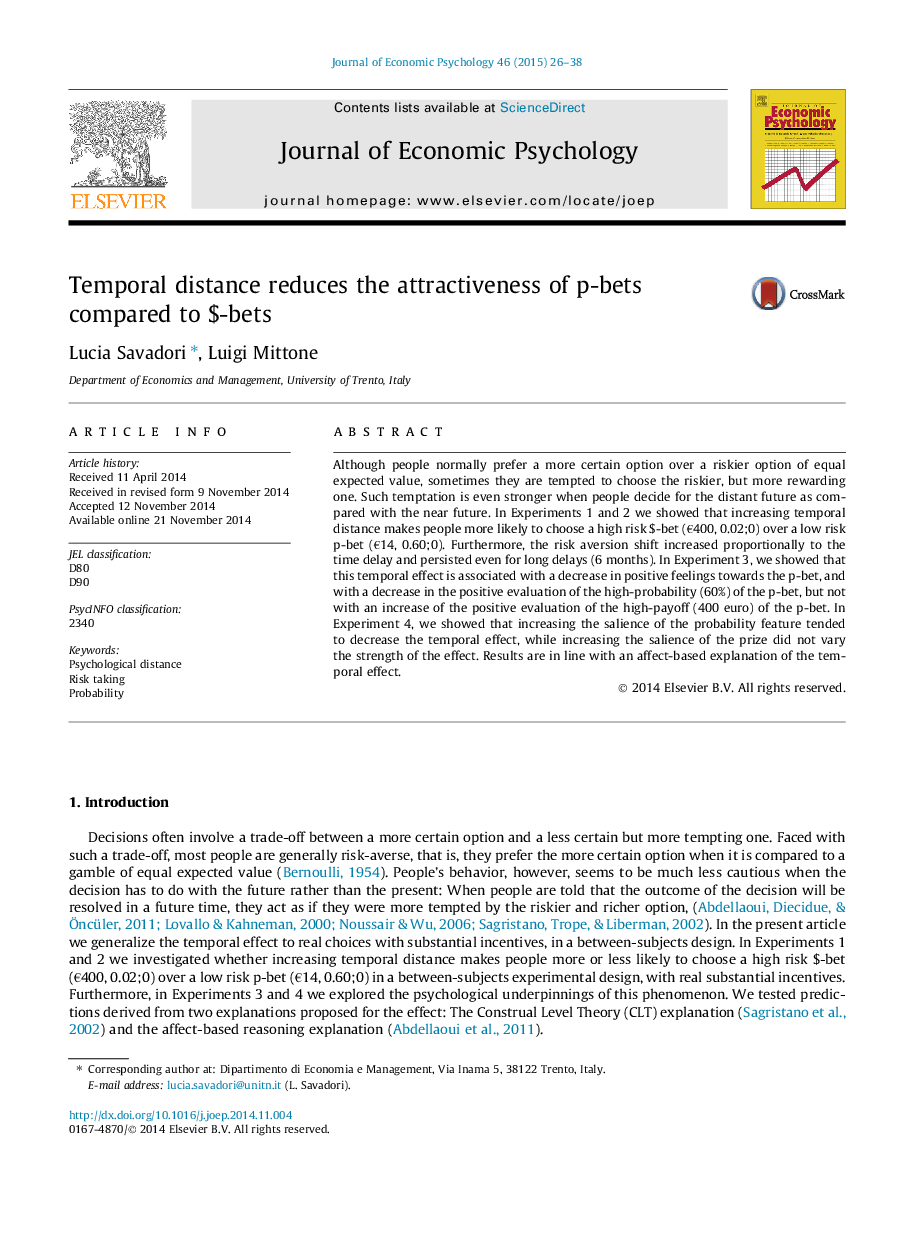| کد مقاله | کد نشریه | سال انتشار | مقاله انگلیسی | نسخه تمام متن |
|---|---|---|---|---|
| 884894 | 1471720 | 2015 | 13 صفحه PDF | دانلود رایگان |
• Temporal distance shifts individual preferences towards the riskier option.
• The effect of temporal distance increases proportionally to the time delay.
• Temporal distance does not seem to make the riskier option more attractive.
• Temporal distance, instead, reduces the attraction towards the safer option.
• The temporal effect seems to impacts the probability and not the payoff.
Although people normally prefer a more certain option over a riskier option of equal expected value, sometimes they are tempted to choose the riskier, but more rewarding one. Such temptation is even stronger when people decide for the distant future as compared with the near future. In Experiments 1 and 2 we showed that increasing temporal distance makes people more likely to choose a high risk $-bet (€400, 0.02;0) over a low risk p-bet (€14, 0.60;0). Furthermore, the risk aversion shift increased proportionally to the time delay and persisted even for long delays (6 months). In Experiment 3, we showed that this temporal effect is associated with a decrease in positive feelings towards the p-bet, and with a decrease in the positive evaluation of the high-probability (60%) of the p-bet, but not with an increase of the positive evaluation of the high-payoff (400 euro) of the p-bet. In Experiment 4, we showed that increasing the salience of the probability feature tended to decrease the temporal effect, while increasing the salience of the prize did not vary the strength of the effect. Results are in line with an affect-based explanation of the temporal effect.
Journal: Journal of Economic Psychology - Volume 46, February 2015, Pages 26–38
